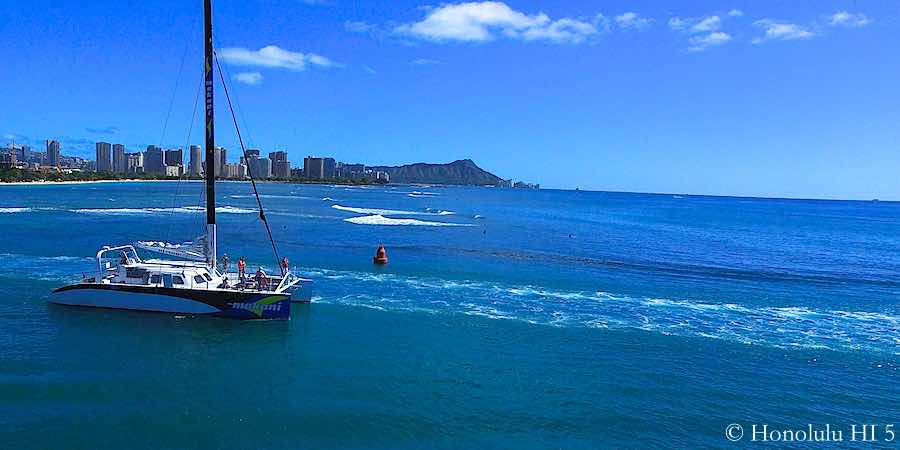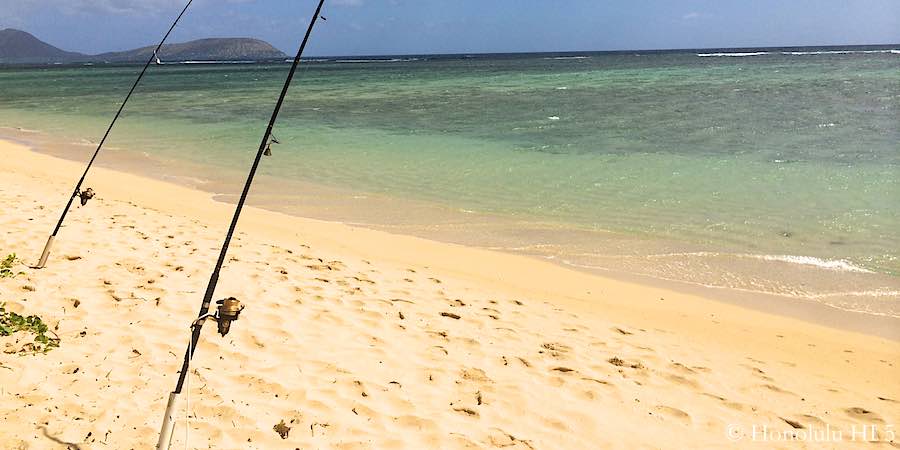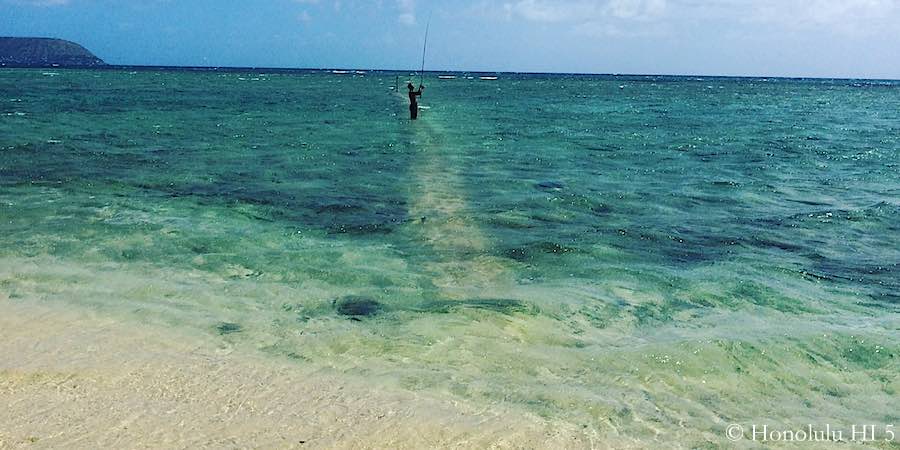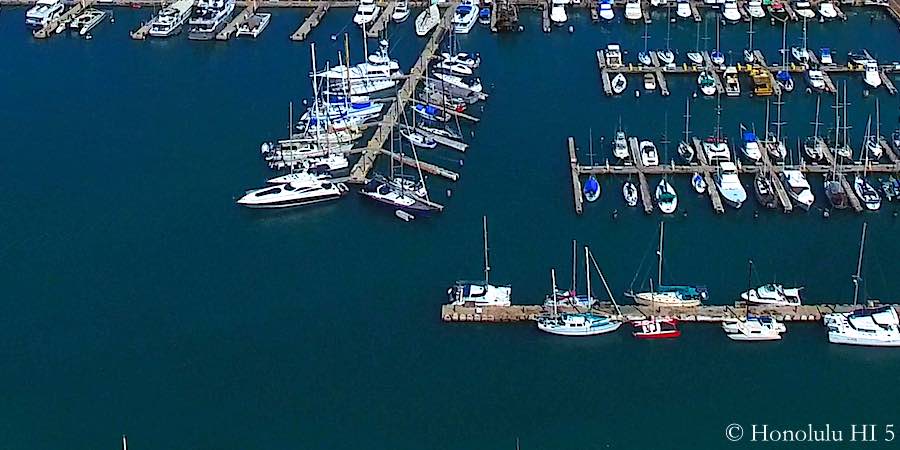

Fishing in Hawaii is more than a hobby. It’s a deeply rooted part of local culture, a critical source of sustenance from the moment these Islands were first occupied. There are those, especially in the Native Hawaiian community, who still today depend on the ocean for much of their family’s daily food, perpetuating the lifestyle of their ancestors.
It’s also an honored way for both locals and visitors to relax, pass the time with friends and enjoy the thrill of the catch, just as it is everywhere. Still, it’s important to understand that in Hawaii, it’s not just a sport or pastime. It’s a way of life, so a healthy amount of respect must be part of your approach to our waters and your fellow anglers.
That respect should also extend to the rules and regulations Hawaii has put in place. That all begins with the first question new arrivals always have – What kind of license do I need to fish in Hawaii?

FISH LICENSES IN HAWAII
The good news is you don’t need a license for recreational saltwater fishing in Hawaii. The slightly bad news? If you want to try your luck in the freshwater options on Oahu or Kauai, you will need one for that. Don’t worry. It’s easy to get and you can do it quickly on Island or even online. Here’s how.
The link below will take you to not just a list of local locations that issue licenses, but also an order form to get your license going right now. After all, why wait?: Hawaii Freshwater Fishing Licenses.
Now that we’ve got that taken care of, what about these regulations? What do you need to know?
HAWAII’S REGULATED FISHING AREAS & SEASONS
Even if you don’t fall in the license-required category, you’re not ready to cast your line in just yet; it isn’t that simple in a delicate ecosystem like Hawaii’s. To preserve the fish population, many areas are strictly regulated by seasons, number of catch allowed and the sizes of nets you can use. Here’s an example.
Did you know the Waikiki-Diamond Head shoreline is open to fishing only in even years? So if it’s an odd year, you’ll have to stick to swimming and surfing in these waters.
Or in the case of the ‘Ama’ama, or striped mullet, it has a statewide season that runs from April to November. Any other month and you gotta throw ’em back.
Hawaii has also established Sanctuaries that carry heavy fines for anyone violating them. Fortunately you can learn exactly where those are, plus all the regulations you’ll need to follow in certain areas on each Island through the links below. Lucky for you, it’s all laid out clearly. Just go to the Island you’ll be fishing on and make note:
Oahu, Big Island of Hawaii, Kaua’i, Maui, Other Regulated Fishing Areas (Oahu & Maui).
Though Hawaii is famous for a more relaxed approach to life, our State takes the fishing laws very seriously, so pay close attention to where you can cast your line – and when. Nothing ruins a great day of angling faster than a hefty fine and a long lecture from our local authority. Keep the fish plentiful for all of us.

MINIMUM SIZES & WEIGHTS
As every experienced fisherman knows, the laws don’t just cover where you can fish, they also set size minimums on your catch, too. You’ll need to know the measurements required to keep them. Hawaii has this online as well, covering both salt and freshwater catches:
Marine Fish & Vertebrates, Marine Invertebrates, Freshwater Fish & Invertebrates.
Now that you’ve got the legal part down, we can finally move on and look at getting you set up for a day out on the ocean!
FISHING KNOTS
Learning to tie at least a few knots should be done before you ever go out. Why? So you don’t have to bother the other guy who’s busy with his own pole. Tying your own knots isn’t just an essential fishing skill, it’s a courtesy to those around you.
Unfortunately, we can’t cover all the knots used in fishing. There are just too many. What we can give you are a couple that shore fishermen swear by and will get you by if you’re going to be casting in from land.
It all begins with getting your hook tied on right. Getting that done simply and quickly is the key, very important when the fish are biting and you need to get your line back in. Now.
The Palomar knot does the job and it’s easy to learn. This video will have you tying it in no time. What about getting your sinker tied on? Use the dropper loop knot, another that’s very easy to do. It’ll hold securely, even in these often active Pacific waters – learn it right here. Get the hang of these two and, if you’re casting in from the beach, the pier or the rocks, you’ll be just fine. Best of all, the guy next to you will be too.
Deep sea fishing, however, takes you to a whole new world of knots, beyond what we can cover. What we can do is point you to this great website with not only step-by-step instructions, but also animations on just about any knot you’ll ever require. Bookmark it and you’ll thank yourself later: All the Fishing Knots You’ll Need.
TYPES OF FISHING LURES
Choice is good. The problem is that the number of different lures has grown exponentially, making the selection of what to use extremely confusing for the uninitiated. Even after finding the right kind of lure, you’re left with one of the most important decisions of all; what color of that lure to use at what time of day and in what conditions.
The color comes into play in 2 ways. One, you want to choose a light or dark shade to contrast with the water’s dark or light tone, so it stands out to the fish. You also want to figure out the color of your targeted fish’s primary prey and match that as well. It’s a complex game. For now, let’s cover some of the major categories of lures. Knowing these is a solid start to a fascinating world that’ll have you hooked!:
Jigs – Jigs have heads weighted with lead and are the most common lure. Some claim they can be used for almost any kind of gamefish. They’re often dressed with hair, feathers or bait.
Spinners – Get their name from the spinning blade that creates a distinctive sound to attract the fish. Good beginner lure since it’s easy to use.
Spoons – Looks like what it originally came from, a spoon with the handle removed. The curved shape makes it wobble back and forth, imitating an injured fish to attract the predator you’re after.
Plugs – Hollow and made to look like certain small fish or even frogs. They customarily have 2 to 3 hooks hanging off them. Can be made to dive in the water to catch the attention of the fish.
Poppers – Popular in Hawaii. They float along the surface and make a noise (a ‘Pop’) that’s hard to ignore. There’s a learning curve to this one.
Spinnerbaits – Made of wire bent like a wide V, with a lead head. Often have a ‘skirt’ to add enticement to bring in your prey.
Those are just a few of the main types of lures to give you some idea of what you’ll encounter out there. The best way to learn about what to use and when is to get advice from experienced sportsmen or your charter guide. They’ll be glad to give you the benefit of their knowledge. Another place to get more knowledge is this article in Wikipedia. You can click on the item names in the Types list to get even more information about each category of lure.
It can be intimidating getting to know even this one aspect of the sport, but the rewards are out there and there’s nothing like the thrill of the chase – and ultimately the Catch!

CHARTER BOAT FISHING IN HAWAII – WHAT TO KNOW
Now let’s talk about actually getting to the water! If deep sea fishing is the way you want to go, then a charter boat is in your future. Do not just sign up with the first charter you see. Do your research to learn exactly what they’re offering in the rental package – time, travel distance and equipment, for starters, as well as pricing.
We also highly recommend checking out online reviews in places like Yelp and Trip Advisor. Nothing can guarantee a perfect experience, but taking this one smart step will head off a lot of potential mistakes. Consistent low ratings and complaints are a sure sign you should move on to the next option. If you make that effort you should have no problem finding one or even a few fishing tours who are well-established in the Islands and deserve your business. Still, here are a few more things you should know, especially if this is your first time going the charter route.
Fishing Charter Share Trips
If your budget is a little lower or you’re just 1 or 2 people, be prepared for a Share Trip, which is exactly what it sounds like. Due to their costs, boats often won’t go out unless they have a minimum number of paying customers, usually 4.
In that case, you’ll be sharing deck space with a stranger or two, which can mean they’ll be on the poles when a big catch finally strikes the lures instead of you. It’s just a matter of timing and luck in this game.
As long as you can accept those minor issues, though, just getting out there on the ocean will be worth it and you just might make some new friends.
How Long Are the Fishing Charter Trips?
Charters come mainly in 4, 6 or 8 hour terms. For serious anglers, the 6 and 8 hour trips will be a no brainer. Those give you time to get out to the real depths, where the big fish play.
The 4 hours are the way to go if you just want a taste of the experience or have other things on the schedule that day. Just understand that the chance of a catch is lower and you may not have much time past the key 1,000 fathom line, where you pass into deep sea fishing territory.
Boats leaving from Lahaina on Maui, for instance, need as much as 45 minutes to get to the best fishing grounds, plus the same to get back. Factor these things in when considering your trip length. It does make a difference.
What’s the Best Place for Charter Fishing in Hawaii?
All of Hawaii offers excellent fishing, but if there’s a Fishing Capital, it’s Kona on the Big Island. This becomes clear just from the fact that the most of the State’s charter boats run out of there. Another solid sign?
The biggest competition of all happens here, the Hawaiian International Billfish Tournament, now going on 60 years. It never fails to reel in teams from all over the world who relish chasing Pacific blue marlin and spearfish.
Not everyone is looking for that kind of expense or challenge level, though. Let’s look at another side of fishing.
SHORE FISHING
You can get plenty of excitement fishing in Hawaii without a boat. Drive down the coastline of any of the Islands and you’ll see lines of poles set up in the sand or on the rocks. Shore fishing may mean smaller catches, but it brings a lot of advantages in exchange.
Lower cost. Easier access. No boat time to get to the right spot. Plus you can do it alone or with a bunch of buddies – there’s no limitations, unlike the charter route. You can see the attractions of staying on land.
That brings us to the unending quest of every angler. Where do I go? What’s the best fishing spot? First, there’s absolutely nothing wrong with pulling over when you see a group of people with their poles in – after all, they just might know something.
However, here’s some good places to start that have earned their reputation for good catches and, for the most part, are easy to reach. There’s a few that aren’t and sometimes those are the very best.
BIG ISLAND FISHING SPOTS